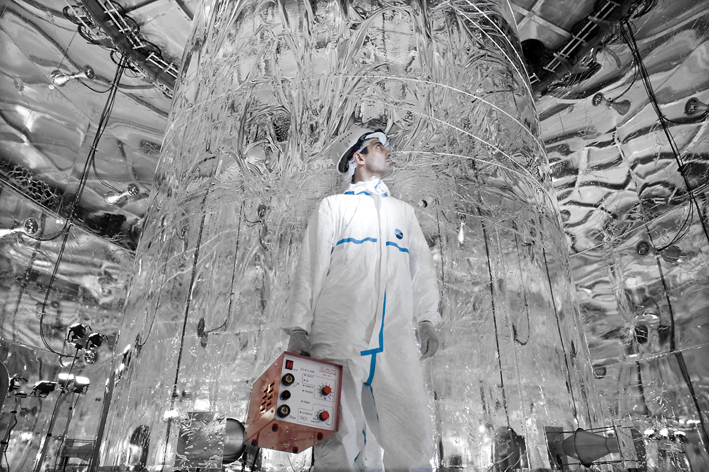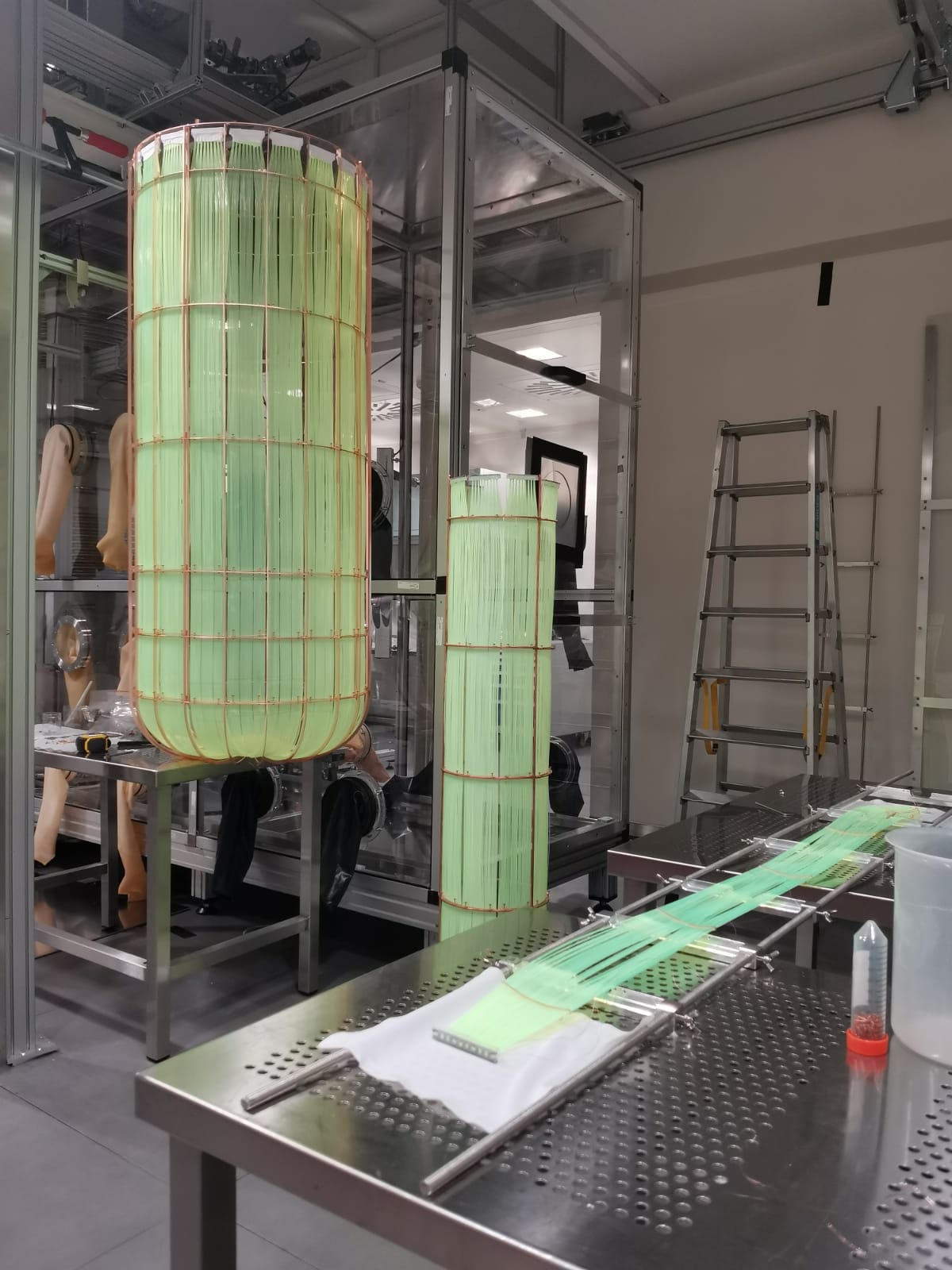
Are neutrinos their own anti-particles?
LEGEND could answer this question. It is a new experiment, phase 1 of which is called LEGEND-200. It is currently being assembled and commissioned at the Gran Sasso Lab in Assergi, Italy. It will look for neutrinoless double-beta decays (0ν2β), a yet-undiscovered process that could hint at the peculiar nature of neutrinos. You can read more about it in this nice and comprehensive talk. LEGEND-200 uses 200 kg of a germanium isotope, Ge-76, with a high bet on being able to take down the environmental backgrounds to essentially zero! The goal is to operate eventually 1 ton of Ge-76 in the final phase, called LEGEND-1000.
Together with colleagues from the Roma Tre INFN group we have been working on LEGEND for a few years now, focusing on the background veto system of liquid argon of LEGEND-200 and the future neutron moderation and detection for LEGEND-1000.
- People: C.J. Barton, E. Bernieri, A. Budano, N. Burlac, V. D'Andrea, F. Paissan, G. Salamanna, D. Tagnani
- Recent leavers: I. Abritta Costa (to LNF)
Reflectivity measurements: We have set-up an optical an optical bench at Dafne Luce (Lab Naz di Frascati) and measured the reflectivity of germanium detectors and other material dipped in liquid argon as a function of wavelength and other boundary conditions. Knowing the reflectivity will enable LEGEND to predict how much light the veto system will effectively collect to empower its background rejection. Enrico Bernieri of INFN is an expert in the field and lead the effort, in close collaboration with Marco Angelucci, Antonella Balerna and Antonio Grilli, all INFN staff at Dafne Luce. A scholarship winner of INFN CSN2 worked on refining the measurements in 2022. A paper is in preparation.
LAr veto FE electronics, commissioning and performance: as Roma Tre we take responsibility for the Front-End electronics of the optical read-out of the veto, based on SiPM; and we contributed to install and commission the system Diego Tagnani is an INFN electrical engineer who works primarily on this. He's aided by Francesco Paissan and Antonio Budano (INFN) for the firmware and slow control developments. Nina Burlac (PhD student), Valerio D'Andrea (INFN researcher) and Patrick Krause (guest scientist at Roma Tre from TUM) are working on the assembly and commissioning of the overall veto and the analysis of the detector data/performance. They are the experts developing algorithms to reconstruct the amount of scintillation light seen by the SiPM and use the info for analysis (DPLMS). You can find here a paper on the L-200 FE electronics. Valerio D'Andrea also works on applying this filter to maximize the energy resolution of the L-200 Germanium diodes (paper)
LAr optical response in cold and vacuum: building on the local expertise and instrumentation for study of liquid scintillators in cryogenic conditions we plan to study the attenuation length and other optical properties of LAr (at T=87 K). With the help of INFN cryogenics experts we designed and optimized a cryogenic infrastructure for argon liquefaction and measurements, called OLAF (Optical Liquid Argon Facility). It was manufactured by the "Cryosystem Engineering" company. We are presently commissioning the infrastructure. In the longer run, this will also bring to making R&D for LEGEND-1000, the next big step. New wavelength shifters? Doping with other scintillators? We want to investigate this. Diego Tagnani, Gianfranco Paruzza (INFN mechanical workshop), Igor Abritta Costa (Post-doc) and Valerio D'Andrea work with me on the local set-up.
Cosmogenic bkg suppression: We are contributing to making LEGEND-1000 at LNGS "cosmogenic-free". On one hand Igor Abritta Costa and I are working on the simulations for the development of suitable plastic materials, doped with Boron or Gadolinium, as effective neutron moderators/absorbers for LEGEND-1000. Neutrons are the most dangerous secondary cosmogenic background. We are initiating an R&D programme, jointly with other INFN nodes, to develop and produce optimum doped moderators, with very low radioactivity; and equipped with a suitable read-out, to identify and veto neutron captures in argon.
On the other hand we also want to understand if it is possible to implement a “fast veto” to remove events where muons activate neutrons in the argon, creating a background dangerously close to the germanium detectors. Danila Stukov (former PhD student) and Luigi Berducci (former GARR fellow, now doctoral student at TU Wien) have been working on this topic with Machine Learning techniques. This work is now being followed up through a collaboration with Francesco Paissan from Trento.
If you speak Italian and want to know more from the outreach perspective, here's an article on La Repubblica on the forefather of LEGEND, GERDA

